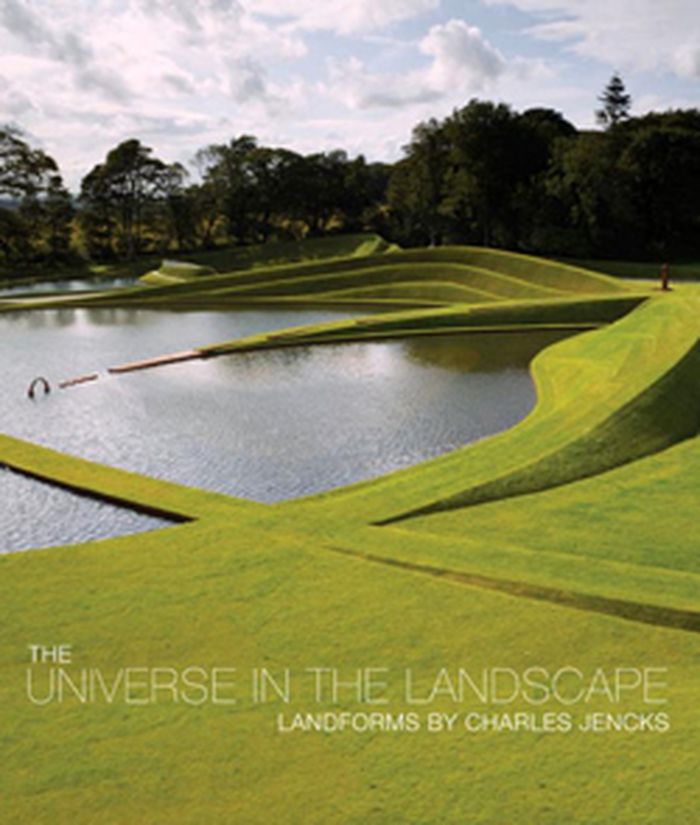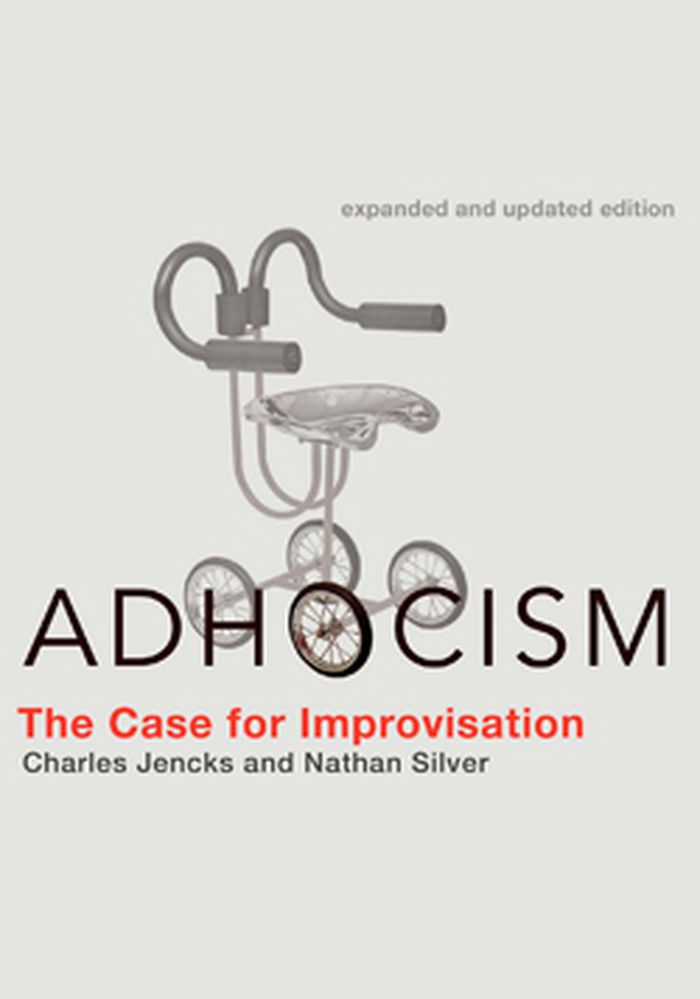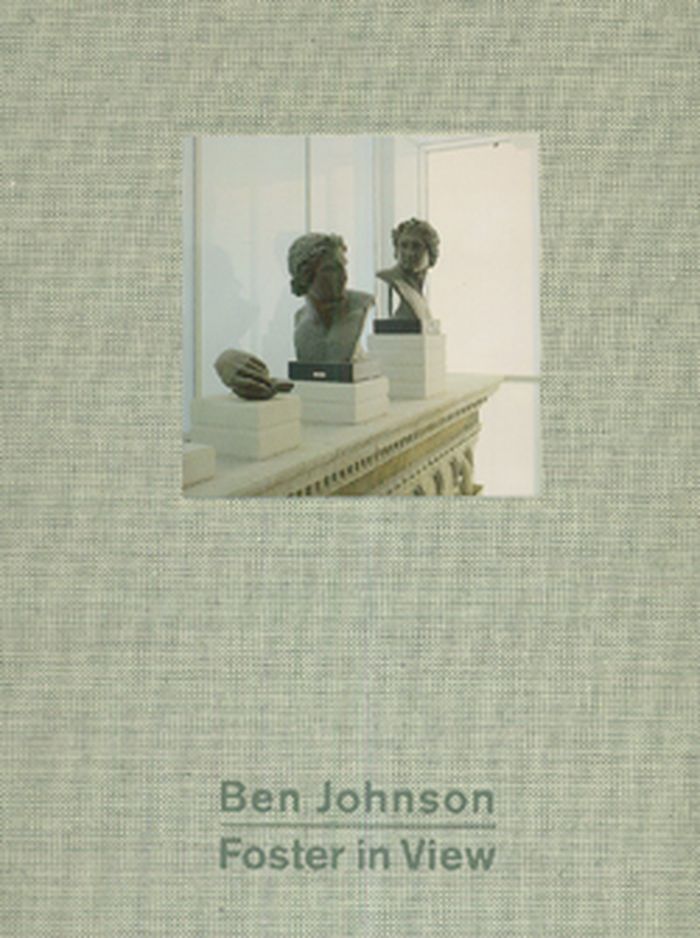The iconic building
$11.95
(available to order)
Summary:
Charles Jencks takes on "trendiness" in architecture : namely the rise of the "iconic building," instantly distinctively recognizable structures like Norman Foster's "Gherkin" in London or Daniel Libeskind's Ground Zero designs in New York. Although there have always been buildings built to be instant icons such as palaces and cathedrals, Jencks sees this latest trend as(...)
September 2005, New York
The iconic building
Actions:
Price:
$11.95
(available to order)
Summary:
Charles Jencks takes on "trendiness" in architecture : namely the rise of the "iconic building," instantly distinctively recognizable structures like Norman Foster's "Gherkin" in London or Daniel Libeskind's Ground Zero designs in New York. Although there have always been buildings built to be instant icons such as palaces and cathedrals, Jencks sees this latest trend as being fueled by the real estate industry's thirst for profit and architects' outsize egos. Since the debut of Gehry's Guggenheim Bilbao, a roster of international architects has created iconic buildings that court publicity and controversy in equal measure. Some iconic buildings are successful creations that fulfill their contradictory requirements, while others make the public and the critics wince. In addition to Foster, Gehry and Libeskind, Jencks also discusses recent works by Peter Eisenman, Zaha Hadid, Rem Koolhaas, and Renzo Piano.
$84.00
(available to order)
Summary:
Telling the story of one of the most important gardens in Europe, created by the internationally celebrated architectural critic and designer Charles Jencks and his late wife, the landscape architect and author Maggie Keswick, this book looks at The Garden of Cosmic Speculation. It is a landscape that celebrates the new sciences of complexity and chaos theory and(...)
Landscape Architecture, Monographs
October 2003, London
The garden of cosmic speculation
Actions:
Price:
$84.00
(available to order)
Summary:
Telling the story of one of the most important gardens in Europe, created by the internationally celebrated architectural critic and designer Charles Jencks and his late wife, the landscape architect and author Maggie Keswick, this book looks at The Garden of Cosmic Speculation. It is a landscape that celebrates the new sciences of complexity and chaos theory and consists of a series of metaphors exploring the origins, the destiny and the substance of the Universe. The garden is full of ideas, associations, games and memories; Jencks weaves his personal account of the garden's creation into an investigation into the revelations of recent science, using landscape and design to shed light on the way we can now conceive of the Universe. This book is illustrated with year-round photography
Landscape Architecture, Monographs
$72.95
(available to order)
Summary:
Landforms are a fast-developing art form that enjoy a wide following today, because of their multiple uses and their enveloping beauty. As formal landscapes that often arise from necessity - recycling a coal site for human use or making new use of excess earth - they are a pleasure to walk over and through. In this collection of his recent work, Charles Jencks explains(...)
The universe in the landscape: landforms by Charles Jencks
Actions:
Price:
$72.95
(available to order)
Summary:
Landforms are a fast-developing art form that enjoy a wide following today, because of their multiple uses and their enveloping beauty. As formal landscapes that often arise from necessity - recycling a coal site for human use or making new use of excess earth - they are a pleasure to walk over and through. In this collection of his recent work, Charles Jencks explains his particular approach to the landform. Like the prehistoric earthworks of Britain that have been an inspiration, such as Stonehenge, his landforms contain cosmic symbolism, and they draw together sculpture, epigraphy, water, gardens, scrap metal and architecture. They address perennial themes - identity, patterns of nature, death and the power of life - but in a contemporary way, based on the insights of science. So Jencks portrays universal aspects of DNA, the spacetime warp of a black hole, the extraordinary way cells divide and unite and some basic forms of life. In this publication Jencks seeks to define a new landscape iconography based on forms and themes that may be eternal, in the sense that they crystallise nature's laws, some of which have been recently discovered. To see a world in a grain of sand was a poetic quest of William Blake and, in a different sense, to find the universe in a ritual landscape was a goal of prehistoric cultures. Jencks allies these spiritual affinities with the view of science that stresses the common patterns that underlie all parts of the cosmos, thus making them like our home planet, and the universe in a landscape.
Landscape Architecture, Monographs
AD: radical post-modernism
$50.00
(available to order)
Summary:
In this issue of Architectural Design the guest editors are drawn, like the content, from contrasting tastes and generations. Charles Jencks, the definer of Post-Modernism for thirty years, discusses some issues that have re-emerged today, while the young group of British architects, FAT, argues for a particular version of RPM. An interview between Rem Koohaas and Charles(...)
October 2011
AD: radical post-modernism
Actions:
Price:
$50.00
(available to order)
Summary:
In this issue of Architectural Design the guest editors are drawn, like the content, from contrasting tastes and generations. Charles Jencks, the definer of Post-Modernism for thirty years, discusses some issues that have re-emerged today, while the young group of British architects, FAT, argues for a particular version of RPM. An interview between Rem Koohaas and Charles Jencks discusses the influence of Post-Modernism while investigations of street art, graffiti and the 1980 Venice Biennale show that communication is at the heart of this radical strain of architecture.
$28.95
(available to order)
Summary:
The first in a series by the Sikkens Foundation, this pocket-sized publication of the Mondrian Lecture given by Charles Jencks reprints his talk in full, along with various images. Jencks discusses the possibility that architecture and well-being can have a direct correlation, exploring how architecture can influence society, business productivity, profits and hospitals.(...)
Can architecture affect your health?
Actions:
Price:
$28.95
(available to order)
Summary:
The first in a series by the Sikkens Foundation, this pocket-sized publication of the Mondrian Lecture given by Charles Jencks reprints his talk in full, along with various images. Jencks discusses the possibility that architecture and well-being can have a direct correlation, exploring how architecture can influence society, business productivity, profits and hospitals. He elaborates with examples of architectural determinism from both ancient and modern history, with a special focus on his experience with the Maggie’s Centres – cancer care centres set up throughout Britain by Jencks and designed by famous architects – whose purpose is to experiment with these ideas.
Architectural Theory
$39.95
(available to order)
Summary:
Charles Jencks and Nathan Silver's book was a manifesto for a generation that took pleasure in doing things ad hoc, using materials at hand to solve real-world problems. The implications were subversive. Turned-off citizens of the 1970s immediately adopted the book as a DIY guide. The word "adhocism" entered the vocabulary, the concept of adhocism became part of the(...)
Adhocism: the case for improvisation
Actions:
Price:
$39.95
(available to order)
Summary:
Charles Jencks and Nathan Silver's book was a manifesto for a generation that took pleasure in doing things ad hoc, using materials at hand to solve real-world problems. The implications were subversive. Turned-off citizens of the 1970s immediately adopted the book as a DIY guide. The word "adhocism" entered the vocabulary, the concept of adhocism became part of the designer's toolkit, and "Adhocism" became a cult classic. Now "Adhocism" is available again, with new texts by Jencks and Silver reflecting on the past forty years of adhocism and new illustrations demonstrating adhocism's continuing relevance.
Architectural Theory
$54.00
(available in store)
Summary:
The reader reprints extracts of key historical texts – those of Daniel Bell on the post-industrial society and Jean-François Lyotard on the post-modern condition. The new cultural logic of contested pluralism is analysed in seminal papers by Andreas Hyssen and Jim Collins. The fundamental ideas on post-modern literature are defined by Umberto Eco, John Barth and David(...)
The post-modern reader, 2nd ed.
Actions:
Price:
$54.00
(available in store)
Summary:
The reader reprints extracts of key historical texts – those of Daniel Bell on the post-industrial society and Jean-François Lyotard on the post-modern condition. The new cultural logic of contested pluralism is analysed in seminal papers by Andreas Hyssen and Jim Collins. The fundamental ideas on post-modern literature are defined by Umberto Eco, John Barth and David Lodge and the theories they present challenge the notion of post-modernism as an ultra avant-garde movement and the expression of a consumer society. For this second edition of the book, Charles Jencks presents a new overview of the Post-Modern, reflecting its maturity as a movement.
Post-modernism
Ben Johnson : Foster in view
$97.00
(available to order)
Summary:
For more than thrity years Ben Johnson the artist has been documenting the work of Norman Foster the architect in photographs that have frequently served as source material for Johnson's own neo-realist paintings. This book is a reocord of this body of work. Included here are photographs of Foster,s most celebrated projects, from the Sainsbury Center for Visual Arts,(...)
Ben Johnson : Foster in view
Actions:
Price:
$97.00
(available to order)
Summary:
For more than thrity years Ben Johnson the artist has been documenting the work of Norman Foster the architect in photographs that have frequently served as source material for Johnson's own neo-realist paintings. This book is a reocord of this body of work. Included here are photographs of Foster,s most celebrated projects, from the Sainsbury Center for Visual Arts, the Hong Kong and Shanghai Bank, the restoration of the Reichstag, and the Great Court at the British Museum, to airports in Hong Kong and Beijing.
Photography monographs
books
$44.95
(available to order)
Summary:
A newly revised and enlarged edition of Jencks' bestseller brings the reader up to date with new projects by some of today's most prominent architects including Peter Eisenman, Frank Gehry, Daniel Libesking and Greg Lynn.
The architecture of the jumping universe, a polemic : how complexity science is changing architecture and culture
Actions:
Price:
$44.95
(available to order)
Summary:
A newly revised and enlarged edition of Jencks' bestseller brings the reader up to date with new projects by some of today's most prominent architects including Peter Eisenman, Frank Gehry, Daniel Libesking and Greg Lynn.
books
January 1900, London
Architectural Theory
books
Architecture 2000 and beyond
$44.95
(available to order)
Summary:
This classic of prediction, written in 1969, has now been brought up-to-date, the prophecies judged, and the omens extended to 2030. The success rate of Jencks' forecasts and his method of combining expert prediction with structural analysis make this book an important contribution to the art of conjecture. Not only did he predict a series of innovations that(...)
Architecture since 1900, Europe
August 2000, Chichester
Architecture 2000 and beyond
Actions:
Price:
$44.95
(available to order)
Summary:
This classic of prediction, written in 1969, has now been brought up-to-date, the prophecies judged, and the omens extended to 2030. The success rate of Jencks' forecasts and his method of combining expert prediction with structural analysis make this book an important contribution to the art of conjecture. Not only did he predict a series of innovations that have changed the world, such as the Internet, but he identified six main architectural traditions that continuously transform over time. This provides a method of gauging what are likely to be the future movements in architecture, a useful and fascinating tool for speculation.
books
August 2000, Chichester
Architecture since 1900, Europe







